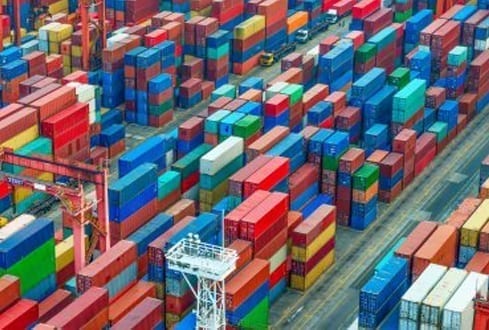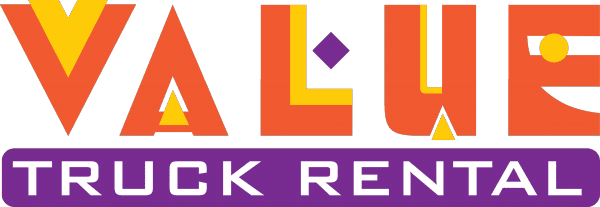
Basic principals
- In November 2014, the International Maritime Organization (IMO) adopted mandatory amendments to the International Convention for the Safety of Life at Sea (SOLAS) Chapter VI, Part A, Regulation 2 – Cargo information. The SOLAS convention is applicable global law.
- The SOLAS amendments become effective on 1 July 2016 for packed containers received for transportation (gate-in or off-rail).
- Main reason for the change is that there is currently no rule or process to ensure that the weight being provided for loading is accurate, leading to huge risks to workforce, vessels, terminals and equipment.
SOLAS implications
- Immediate consequences for the shipper are that as of July 2016, the Verified Gross Mass (VGM) weight of every container needs to be provided to the carrier, before the VGM cut-off date provided by the DGF/carrier.
- Furthermore, it will be the shipper’s responsibility to ensure that the accurate weight, and not an ‘estimated’ weight, is being provided.
If no Verified Gross Mass weight has been provided, the shipping line will not accept to load the container on the vessel. It may also be refused at the terminal gate if VGM is missing. - Two permissible methods for weighing:
- Method 1: Weigh the packed container.
- Method 2: Weigh the cargo and the mass of pallets, dunnage and other packing and securing materials and add tare mass of the container. Hint: Packages that have the accurate mass clearly and permanently marked on their surfaces do not need to be weighed again when they are packed into the container. Shippers may want to review their packaging and database records to ensure the most accurate weight is stored in their system.
- But — shippers remain responsible for verified weight. “Shipper” means the party identified on carrier’s or Danmar Lines Bill of Lading.
Difference between booked weight, bill of lading weight and the VGM
- Booked weight is the estimated weight at the time of booking.
- Bill of Lading weight is the correct weight of the cargo (excluding dunnage and other packing and securing materials and the tare weight of the container.)
- Verified Gross Mass (VGM) is the weight including the cargo + dunnage and other packing and securing materials + tare weight from the container.)
Operation preparations
- Presently more and more information is being released by national authorities on how they plan to implement SOLAS.
- Carriers and other parties are beginning to align their activities. It will require a lot of cooperation to support the transition from a legal framework to an operational one which will also have a commercial impact. Currently there is no uniform worldwide procedure agreed, for this reason implementation will be done country by country and as per country regulations.
- As expected national variations are emerging, especially related to tolerances and penalties for non-compliance.
- Carriers have also started to release how and when they want to receive Verified Gross Mass (VGM). It is clear that while many parties are addressing the subject, many decisions still need to be made in order to meet the July 1, 2016 deadline.
When is the starting day?
-
- Official starting day is 1 July 2016, even if national government has not provided guidelines.
- Carrier will abide by the new SOLAS regulations.
- Continue Shipment
- Containers already boarded on a vessel prior to 1st July
- VGM required?
- Container at container yard (but not yet loaded)
- Container in transshipment (to mother or feeder vessel)
- Containers connecting to a vessel after the inland move
Preliminary operational guidelines
Ocean Direct (FCL)
Key process steps:
- Define container VGM via a weighing process (see slide 8)
- Signing of VGM document by shipper or person authorized by shipper
- Shipper to provide VGM document to DGF/Danmar
- DGF/Danmar to provide VGM document to ocean carrier
Process summary
Options for weighing
The VGM of a container contains of
- Container itself
- Loaded goods (boxes/pallets)
- Packaging material (e.g. wrapping foil)
- Stowing material (bars, straps, airbags)
Option A – Weighing at Shipper
- Weighing of complete container / deduct weight of truck, chassis, fuel
OR
Option A – Weighing before arrival at port of loading
- Weighing of complete container / deduct weight of truck, chassis, fuel
Option B
- Weighing at Shipper
- Weighing of all packages + cargo items loaded into the container
- Add weight of empty container (tare weight)
Preliminary operational guidelines
Ocean Connect (LCL)
The SOLAS amendment calls several times for the commercial parties to come to practical agreements for implementing the requirements. Commercial agreements between forwarders and shippers may therefore state that the forwarder may transmit the VGM to the carrier on the shipper’s behalf.
This situation is complicated when dealing with consolidations. For an actual shipper/forwarder in a (LCL) consolidation environment, the SOLAS amendment does not apply. It is the consolidator who packs the container and who acts as shipper towards the shipping line.
Due to the fact that consolidated cargo is not homogenous and due to the high number of shipments handled, it may not be practical or even possible to weigh each and every single shipment.
In the case of LCL cargo in a consolidation environment the consolidator could consider implementing a LCL document verifying the actual weight of the cargo. Similar as for FCL, the consolidator is then able to use the actual shipper or forwarder’s verified weight declarations to prepare and compare this info with its own verified weight declaration towards the shipping line.
Preliminary LCL operational guidance
For customers
DGF recommends the following preliminary operational guidelines until more information becomes available.
- DGF has decided that physically weighing each individual LCL shipment will be too cumbersome and will therefore instruct their offices to weigh each consolidation container after loading. This weight will be considered as VGM and transmitted to the carrier.
- For LCL, DGF must receive the actual weight per shipment from the customer who has made the booking before loading and compare the sum of all individual weights/shipment with the total actual VGM of the consolidation container after loading. The carrier or NVOCC is not a ‘verifier’ of the weight provided by the shipper.
- Each DGF office will advance the CFS Cut-off dates with 1 or 2 days so re-loading is still possible in case there is overweight found at the terminal.
- In case the VGM exceeds the maximum payload of the container, all relevant reloading and weighing costs of the individual shipments and transport costs will be charged to the party or parties who have mis-declared the weight (based on declared VGM received from the customer/shipper before loading of the container).
- A clause will be mentioned in our booking conditions.
- DGF is preparing an inventory of which warehouses can facilitate weighing of the containers or have a weighing scale nearby.
- All the DGF warehouses are recommended to have a weighbridge by June 1, 2016 to support customers who cannot provide VGM, additional costs for weighing to be confirmed.
- DGF will add an admin fee to the tariff to cover the extra workload and charges for weighing the containers.
How can you send us VGM information?
VGM reporting is the sole responsibility of the shipper who may use a third party to perform this function of a completely packed container. The local VGM cut-off may vary by location.
Preferred Methods of reporting:
- An eVGM for which VERMAS was developed
- (VERified MASs is a new EDI-message specifically created for Solas VGM)
- Existing EDI connections (electronic shipping instructions)
- DHL public website (under development) – Template
- Via email – Template
- Various portals such as INTTRA, GT NEXUS, Cargosmart (for non-Danmar lines moves)
Mandatory information to be submitted:
- Booking number
- Container Number
- Verified gross weight (VGM)
- Unit of Measurement (UOM)
- Responsible party (shipper named
- on the carrier’s bill of lading or Danmar B/L
- Authorised person (in capital letters)
Optional VERMAS-supported information:
- Weighing date (strongly recommended)
- Shipper’s internal reference
- Weighing method
- Ordering party
- Weighing facility
- Conutry of method
- Documentation holding party
Carriers & terminals
Carriers
- Cut-Off times – No carrier has announced if there will be a change in cut-off times, as this is a commercial decision between carriers and terminals
Terminals
- Every terminal decides on their own VGM strategy and it’s a local (commercial) decision
- Gate-in of containers with/without VGM
- Some terminals will keep containers without a VGM in a separate stack pending the VGM, but also here it will depend on availability of space.
The cost of being compliant
Weighing
- Availability of weigh-bridges will indicate costs
Transport
- Additional time/km due to weighing facility not directly on the road to the terminal
- Waiting time at the weigh bridges (queuing)
IT
- EDI set-up costs
- Transmission costs
Admin
- Handling / communication fee
Useful links
- Guidelines regarding the verified gross mass of a container carrying cargo:
- Guidelines for improving safety and implementing the SOLAS container weight verification requirements:
- The IMO/ILO/UNECE Code of Practice for Packing of Cargo Transport Units (CTU) and CTU Code informative materials can be found at:
- SMDG, including the Implementation Guidelines:
- Local guidelines & authorities




